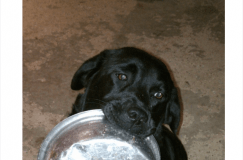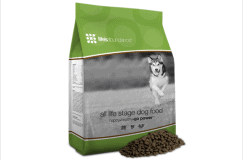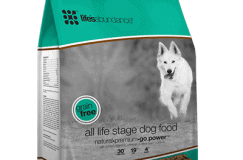Where do the meat sources “really” come from in processed pet food?
I was just doing a simple Google search one day, as I usually do, researching pet foods, as I’ve done for the past 20 years having been obsessed with learning about what pet foods are best for our dogs.
I read hundreds of books and articles on this subject each year. Its quite a challenge to “keep up,” especially when the dog food companies change their ingredients regularly, on a whim, with no warning to the consumers.
Recently, I took a trip to the local pet food distributor in our area that sells all the major premium brands of dog food. You name it, it was there. I spent an hour scouring the dog food labels, and my heart dropped as I realized what was happening to our once-high quality, premium pet foods. Here is what I found:
Since the recession, I’ve begun to see ingredients pop up on ingredients labels that I’d never seen before. And here are some examples:
1.) They use vague terms like “meat meal” rather than more specific words like “deboned chicken” just “chicken” to describe their components. Not that a “meal” is wrong…people just think it is “inferior” for some reaosn. The fat that is separated becomes “animal fat” that goes into pet food (for example, chicken fat, beef fat, etc). The remaining dried protein solids become “meal” … After cooking, the dried solids are added as “meal” to pet food.(Unless you know a pet food’s formulator intimately, as I do Life’s Abundance, never assume what that meal comes from)
Let’s differentiate between chicken and chicken meal. The definition for chicken, according to the Association of American Feed Control Officials (AAFCO), describes it as a clean combination of flesh and skin with or without accompanying bone, derived from parts of whole carcasses of chickens thereof, exclusive of feathers, heads, feet, and entrails. Chicken meal, according to AAFCO, is the dry rendered product from a combination of clean flesh and skin with and without accompanying bone, derived from whole carcasses of chicken thereof, exclusive of feathers, heads, feet, and entrails. Chicken essentially is taking a roaster and grinding it up, mixing everything together including muscle, skin, and bones. The water content averages around 70%, along with 18% protein and 5% fat. Now take this ground chicken and carefully dry it to a moisture level of 10%. The protein content is now 65% and the fat level is 12%. This product is chicken meal.
Many pet owners feel that chicken is a superior ingredient to chicken meal. It would seem logical that feeding a pet a whole, non-rendered chicken would be good. It would give the owner the feeling that the pet is eating human food. However, these ingredients make up only part of the total food.
Let’s go through the manufacturing process for a pet food. Typically, all of the ingredients (meats, grains, vitamins, minerals) are all mixed together and run through a machine called an extruder. The extruder cooks the mixture by adding steam and water. The result is the familiar kibble coming out of the extruder and subsequently dried. Fat is added after drying. This is the same process for making many of the breakfast cereals. The final product has a moisture level of around 10% – far different than the 70% moisture of that chicken.
The processing of chicken along with the other ingredients essentially is converting it to chicken meal. However, there are some characteristics of chicken that makes it less flexible for use as an ingredient compared to chicken meal. The high moisture content of chicken limits the amount that can be formulated into a complete finished food. Chicken is generally stored frozen to minimize microbial growth. The frozen chicken is thawed and made into a slurry before adding to the mix. On the other hand, chicken meal can be used in a finished food at levels much greater than chicken. In addition, the same quantity of chicken meal provides roughly 4-5 times the nutrients as the same weight of chicken because of the differences in moisture. For example, 100 lbs of chicken meal provide 65 lbs of protein while 100 lbs of chicken provide only 18 lbs of protein. So, a product with chicken as its first ingredient may only have 20% of this ingredient in the final product providing 3.6% protein. Chicken meal at 20% of the food provides 13% protein. The maximum inclusion of chicken meal into the final product can be significantly greater than for chicken.
Let’s assume a dog food (Product A) has a protein level of 28%. Chicken meal is the first ingredient comprising 25% of the food. Assume that Product B is 28% protein and has chicken as the first ingredient. Consequently, chicken meal would have to be added at the same amount as chicken in Product B to provide the same amount of protein from chicken sources to be equal to Product A. For example, Product A has 25% chicken meal which would be equal to Product B having 20% chicken and 20% chicken meal.
One product can have chicken meal as the first ingredient and another can have chicken. It is almost certain that the product with chicken meal makes a greater contribution to the total protein of the product than chicken. Both are providing the same profile of amino acids, the protein building blocks.
2.) They’ve added legumes such as chickpeas and others as a “cheap sources of protein”, when in fact, legumes are not even species-appropriate to our dogs and cats. Some of these legumes are in high quantity and are GMO’s as well as phytoestrogens. If our pet’s hormones and everything they control are off balance, you will see numerous health issues arise. In the end, when it all comes out in the wash, the amount of legumes most times exceeds the amount of fat. (CHECK YOUR DOG FOOD BAG FOR BEANS, BEANS, BEANS!)
3.) Soy-this is a phytoestrogen which will wreak havoc with your dog’s hormones and thyroid.–ITS EVERYWHERE IN DOG FOODS! While I encourage to read the link below about soy, here are just a few of its dangers:
- Soy is antigenic (meaning it can stimulate the production of antibodies)
- Soy is high in goitrogens, which interfere with iodine metabolism
- Soy denatures during high-temperature processing resulting in the formation of toxic lysinoalanine and highly carcinogenic nitrosamines
- Soy contains trypsin inhibitors (which have caused stunted growth in test animals)
- Soy is high in phytic acid, which reduces the digestion of key nutrients
- In humans, soy’s compounds resemble human estrogen, which blocks normal estrogen, causing infertility, and increasing the risk of breast cancer
- Soy has high levels of manganese and aluminum, which can lead to brain damage
- Ingestion of soybean products is linked to seizures in both dogs and cats
- Soy can cause serious gastric distress (gas and discomfort) in our pets
Read why Soy should not be in pet foods
FILLERS:
Don’t be fooled by nonsensical discussions on “Good vs Bad pet food fillers. The bottom line is this: fillers in commercial pet food are there for the benefit of the manufacturers, not for the animals who will be fed their formulas. The other benefit of these formulas is that they are affordable for most pet owners.
Your job as the loving guardian of a dog or cat is to feed the highest quality diet you can reasonably afford, since what your pet eats directly contributes to how long he will live, and how healthy he will remain throughout his lifetime.
Read more here about fillers in dog food
FAT SOURCES:
AAFCO: Obtained from the tissues of mammals and/or poultry in the commercial processes of rendering or extracting. It consists predominantly of glyceride esters of fatty acids and contains no additions of free fatty acids. If an antioxidant is used, the common name or names must be indicated, followed by the words “used as a preservative”.
Note that the animal source is not specified and is not required to originate from “slaughtered” animals. The rendered animals can be obtained from any source, so there is no control over quality or contamination. Any kind of animal can be included: “4-D animals” (dead, diseased, disabled, or dying prior to slaughter), goats, pigs, horses, rats, misc. roadkill, animals euthanized at shelters, restaurant and supermarket refuse and so on.
Vegetable Oil AAFCO: The product of vegetable origin obtained by extracting the oil from seeds or fruits which are processed for edible purposes. The source vegetables for this oil (and therefore the nutrient properties or lack thereof) are unknown. Wouldn’t you like to know just what exactly you are feeding your pet?
Sometimes this oil, even “Canola Oil” is actually leftover, discarded oil from restaurants.
CORN:
Genetically modified Corn (GMO) and its effect on rats: Previous studies have shown that genetically modified corn causes significant kidney and liver disease in rats after only a 90-day feeding trial,2 and has a negative effect on other organs as well, including the heart and spleen.
Now a new lifetime study of rats fed a diet containing GM corn shows they not only died earlier than rats on a standard diet, they developed mammary tumors and severe kidney and liver damage as well.3
According to researchers, half the male rats and 70 percent of females died prematurely, compared with 30 percent of males and 20 percent of females in the control group.
Lead researcher Gilles-Eric Seralini of the University of Caen, believes his study involving the full lifespan of rats gives a more comprehensive and realistic view of the risks of GM corn than 90-day feeding trials. A rat at three months is still a young adult.
To read more about the dangers of corn in pet food.
So, WHAT’S IN YOUR DOG’S PET FOOD?
These are ONLY two dog foods I feed and recommend. I know the developers (both Holistic Veterinarians) and I’ve researched each and every ingredient. And if you have a lab, you must know, they are VERY prone to food allergy. So if you want to feed them the best food you can, check these out:
Photo credit:






26 Comments